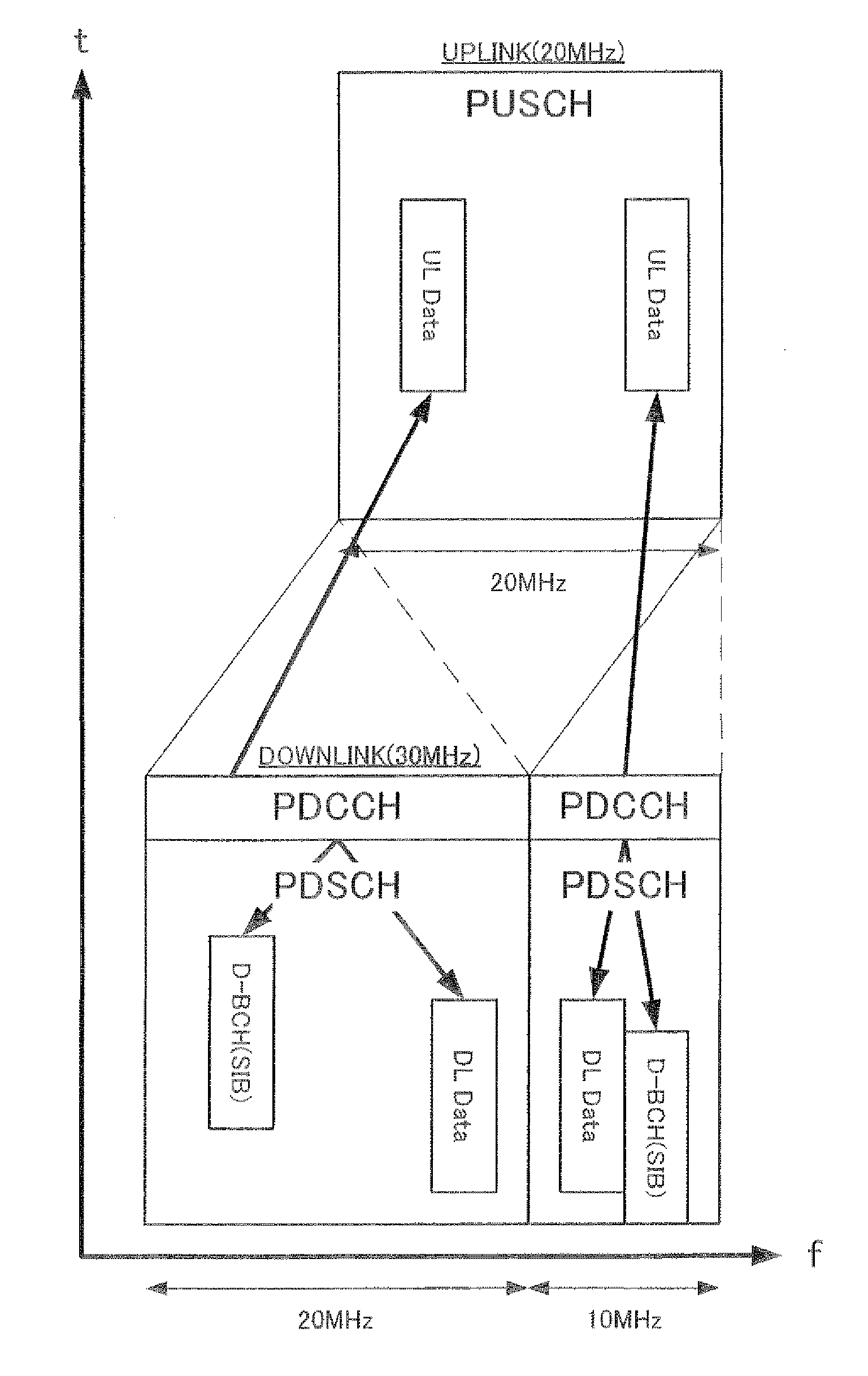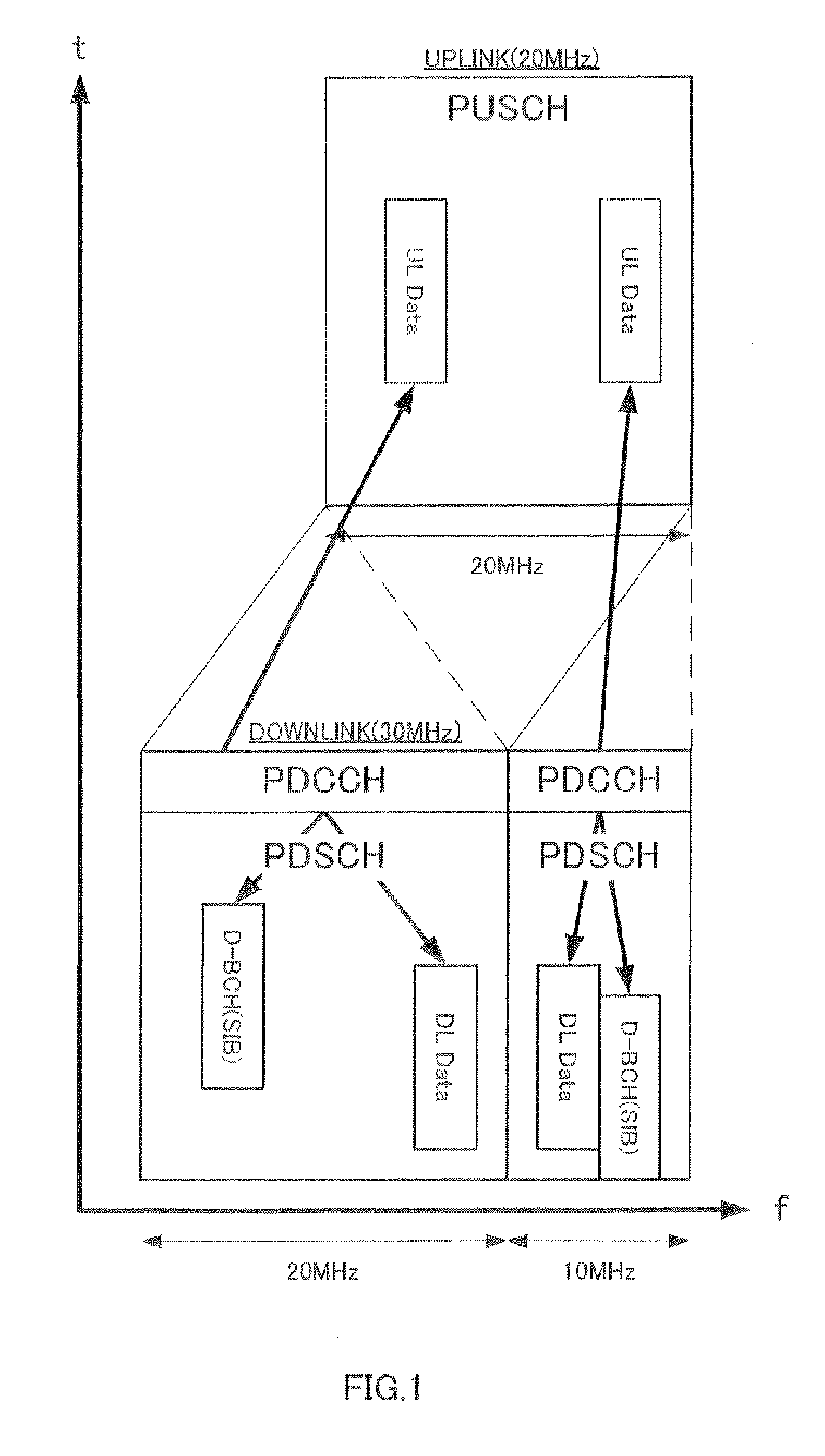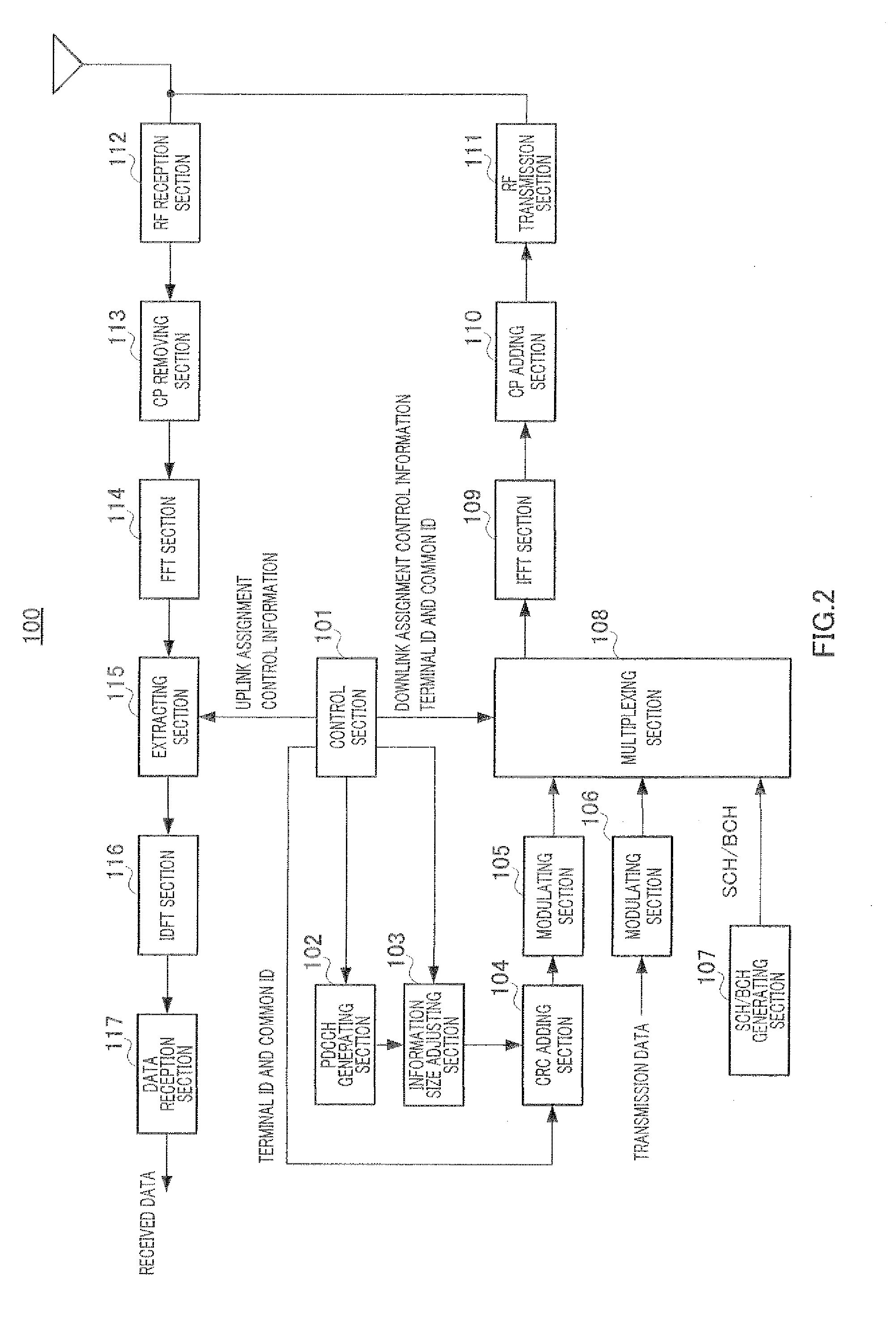Radio terminal, radio base station, channel signal forming method and channel signal receiving method
a radio base station and channel signal technology, applied in the direction of multiplex communication, information relaying among terminal devices, orthogonal multiplex, etc., to prevent the quality of downlink assignment control information from degrading
- Summary
- Abstract
- Description
- Claims
- Application Information
AI Technical Summary
Benefits of technology
Problems solved by technology
Method used
Image
Examples
embodiment 1
[0046]FIG. 2 is a block diagram showing a configuration of base station 100 according to Embodiment 1 of the present invention. In FIG. 2, base station 100 includes control section 101, PDCCH generating section 102, information size adjusting section 103, CRC (Cyclic Redundancy Check) adding section 104, modulating section 105 and 106, SCH / BCH generating section 107, multiplexing section 108, IFFT section 109, CP adding section 110, RF transmission section 111, RF reception section 112, CP removing section 113, FFT section 114, extracting section 115, IDFT section 116, and data reception section 117. Base station 100 is configured to be able to communicate with terminal 200 (described later) using a component band group composed of an uplink component band and a plurality of downlink component bands associated with the uplink component band. A component band group is set for each terminal 200. Some or all of a plurality of component bands composing the component band group allocated...
embodiment 2
[0126]As Embodiment 1, the present embodiment explains the configuration, when the communication bandwidth (the number of basic component band) is asymmetric between an uplink and a downlink, in a common region, an LIE-A system specific broadcast information (D-BCH+) (that is, an LTE terminal does not need to receive) and broadcast information of an LTE system (D-BCH) are transmitted one after another by time division.
[0127]FIG. 9 is a block diagram showing the configuration of base station 300 of Embodiment 2 of the present invention. Compared to base station 100 of Embodiment 1 shown in FIG. 2, base station 300 shown in FIG. 9 adds BCH+ generating section 318 and includes control section 301 instead of control section 101, information size adjusting section 303 instead of information size adjusting section 103, and multiplexing section 308 instead of multiplexing section 108. Parts in FIG. 9 that are the same as in FIG. 2 will be assigned the same reference numerals as in FIG. 2 a...
PUM
 Login to View More
Login to View More Abstract
Description
Claims
Application Information
 Login to View More
Login to View More - R&D
- Intellectual Property
- Life Sciences
- Materials
- Tech Scout
- Unparalleled Data Quality
- Higher Quality Content
- 60% Fewer Hallucinations
Browse by: Latest US Patents, China's latest patents, Technical Efficacy Thesaurus, Application Domain, Technology Topic, Popular Technical Reports.
© 2025 PatSnap. All rights reserved.Legal|Privacy policy|Modern Slavery Act Transparency Statement|Sitemap|About US| Contact US: help@patsnap.com



